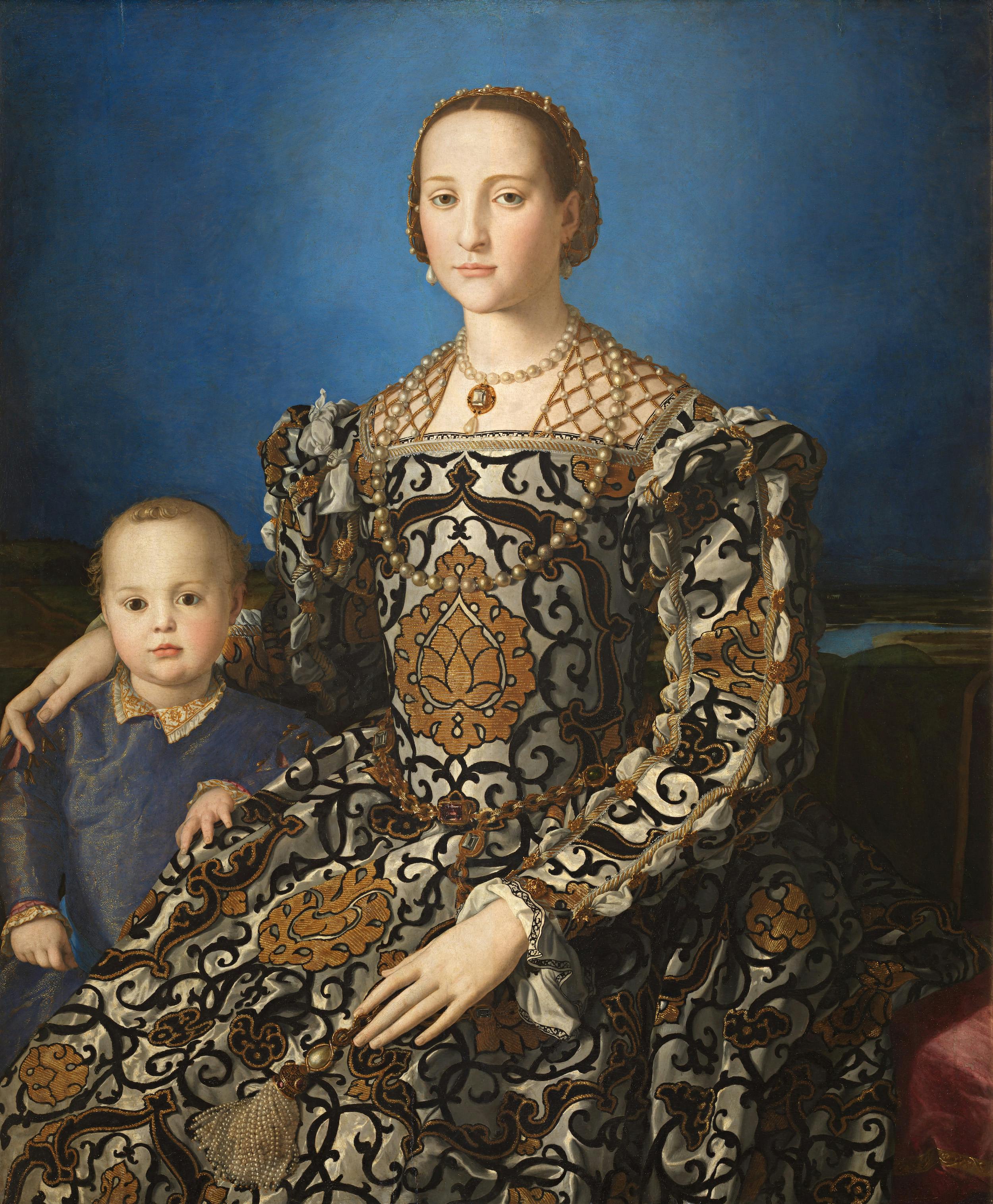Portrait of Eleonora di Toledo with her son Giovanni
Agnolo di Cosimo Tori detto Bronzino (Firenze 1503-1572)
The magnificent portrait of Eleonora di Toledo together with her second son Giovanni is one of Bronzino's greatest masterpieces, and is the work that contributed to transmitting the splendour of Cosimo I de' Medici’s bride to the collective imaginary. With her luminous skin, rich jewels, and sumptuous dress, Eleonora stands out against an arresting blue background that endows her with an aura of sacrality, effectively equating the portrait with an apparition. This large blue surface was executed with the most expensive pigment available, lapis lazuli blue, traditionally used in Italian art for the Virgin's cloak, an identifying sign of devotion to Mary. One of the aims of this portrait is surely the exaltation of the dynastic role of the Duchess, who secured the succession of the Medici line, as attested by the presence of Giovanni, born in 1543. Her second son was destined for an ecclesiastical career like his famous ancestor’s namesake, Giovanni, second son of Lorenzo il Magnifico, who became Pope Leo X in 1513. Another significant element is certainly the robe woven in a silk brocade, the most expensive fabric available, a speciality of the Florentine textile industry, often employed for liturgical vestments. The repeated motifs of the fabric, the pomegranate and pinecone, are Christian symbols of resurrection and regeneration, which allude to the Duchess' fertility. Yet the painting is certainly not intended to only offer the image of a good Christian wife and mother. Eleonora was a stateswoman, a capable administrator, the Duke's most important collaborator. In the summer of 1545, while Bronzino was executing her portrait, Eleonora had already served three times as a head of state during Cosimo's absences. By depicting her up to her knees, thus replicating the same innovative solution Raphael adopted in painting Leo X, Bronzino provided this portrait with an aura of majesty and authority, making the face of this woman the emblem of a determined and noble spirit. Bronzino succeeded in capturing all the features of Eleonora's personality and conveying them in an extraordinary portrait that depicts a wife and mother as well as a powerful and independent woman.
Eleonora di Toledo e l'invenzione della corte a Firenze, edited by B. Edelstein and V. Conticelli, Livorno 2023, pp. 288-291.
